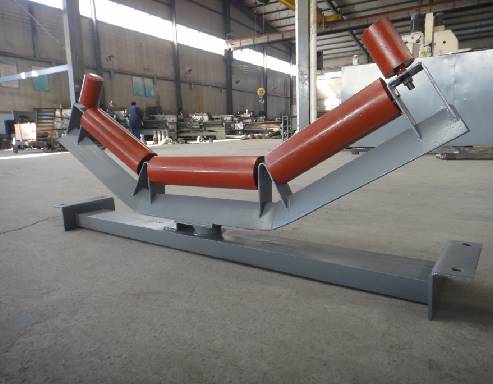 Afrikaans
Afrikaans  Albanian
Albanian  Amharic
Amharic  Arabic
Arabic  Armenian
Armenian  Azerbaijani
Azerbaijani  Basque
Basque  Belarusian
Belarusian  Bengali
Bengali  Bosnian
Bosnian  Bulgarian
Bulgarian  Catalan
Catalan  Cebuano
Cebuano  Corsican
Corsican  Croatian
Croatian  Czech
Czech  Danish
Danish  Dutch
Dutch  English
English  Esperanto
Esperanto  Estonian
Estonian  Finnish
Finnish  French
French  Frisian
Frisian  Galician
Galician  Georgian
Georgian  German
German  Greek
Greek  Gujarati
Gujarati  Haitian Creole
Haitian Creole  hausa
hausa  hawaiian
hawaiian  Hebrew
Hebrew  Hindi
Hindi  Miao
Miao  Hungarian
Hungarian  Icelandic
Icelandic  igbo
igbo  Indonesian
Indonesian  irish
irish  Italian
Italian  Japanese
Japanese  Javanese
Javanese  Kannada
Kannada  kazakh
kazakh  Khmer
Khmer  Rwandese
Rwandese  Korean
Korean  Kurdish
Kurdish  Kyrgyz
Kyrgyz  Lao
Lao  Latin
Latin  Latvian
Latvian  Lithuanian
Lithuanian  Luxembourgish
Luxembourgish  Macedonian
Macedonian  Malgashi
Malgashi  Malay
Malay  Malayalam
Malayalam  Maltese
Maltese  Maori
Maori  Marathi
Marathi  Mongolian
Mongolian  Myanmar
Myanmar  Nepali
Nepali  Norwegian
Norwegian  Norwegian
Norwegian  Occitan
Occitan  Pashto
Pashto  Persian
Persian  Polish
Polish  Portuguese
Portuguese  Punjabi
Punjabi  Romanian
Romanian  Russian
Russian  Samoan
Samoan  Scottish Gaelic
Scottish Gaelic  Serbian
Serbian  Sesotho
Sesotho  Shona
Shona  Sindhi
Sindhi  Sinhala
Sinhala  Slovak
Slovak  Slovenian
Slovenian  Somali
Somali  Spanish
Spanish  Sundanese
Sundanese  Swahili
Swahili  Swedish
Swedish  Tagalog
Tagalog  Tajik
Tajik  Tamil
Tamil  Tatar
Tatar  Telugu
Telugu  Thai
Thai  Turkish
Turkish  Turkmen
Turkmen  Ukrainian
Ukrainian  Urdu
Urdu  Uighur
Uighur  Uzbek
Uzbek  Vietnamese
Vietnamese  Welsh
Welsh  Bantu
Bantu  Yiddish
Yiddish  Yoruba
Yoruba  Zulu
Zulu Choosing the Right Idler Rollers for Efficient Belt Conveyor Systems
Understanding Idler Rollers for Belt Conveyors
Belt conveyors are an integral component of many industrial processes, enabling the efficient transport of materials across varying distances and terrains. A crucial part of these systems is the idler roller, a component that plays a significant role in the overall functionality and performance of belt conveyors. This article will explore the importance, types, and maintenance of idler rollers in belt conveyor systems.
What are Idler Rollers?
Idler rollers are cylindrical components that support the conveyor belt as it moves materials from one point to another. They are typically mounted on frames at regular intervals along the conveyor system and serve several essential functions. Primarily, idler rollers assist in maintaining the belt's alignment, ensuring that it operates smoothly without slipping or deviating from its intended path.
Moreover, idler rollers help minimize friction between the conveyor belt and the surface it travels over. By providing a smooth contact surface, they reduce wear and tear on the belt, extending its lifespan and decreasing maintenance costs. Additionally, they support the weight of the material being transported, which is critical for efficient operation.
Types of Idler Rollers
Idler rollers come in various designs and materials to accommodate different applications and environments. The most common types include
1. Flat Idlers These are designed to support the belt in a horizontal position. Flat idlers are usually aligned with the belt's surface and do not have any additional features.
2. Crowned Idlers Featuring a slightly raised center, crowned idlers help the belt self-align. This design is particularly beneficial in minimizing belt misalignment, thus reducing wear and enhancing performance.
3. Trough Idlers These are used in applications where the conveyor must handle bulk materials. Trough idlers hold the belt in a U-shape, providing better containment for loose materials and preventing spillage.
idler rollers for belt conveyors

4. Return Rollers These idlers are located on the return side of the conveyor belt. They help support the belt as it returns to the starting point and are typically designed to minimize friction and wear.
5. Impact Idlers Positioned in areas where heavy loads are received, these rollers are built to absorb the impact of heavy materials dropping onto the belt, thus protecting the belt and other conveyor components from damage.
Maintenance of Idler Rollers
Regular maintenance of idler rollers is critical for optimal conveyor performance. Over time, idler rollers can wear out due to exposure to heavy loads, dust, and debris. The following maintenance practices can help extend the life of idler rollers
1. Routine Inspections Conducting regular inspections will help identify any wear or damage to the idler rollers. Look for signs of misalignment, excessive wear, or damage to the roller itself.
2. Lubrication Many idler rollers have bearings that require lubrication. Ensuring that these bearings are regularly oiled will minimize friction and prolong the life of the roller.
3. Cleaning Keeping the idler rollers clean from dirt, debris, and material build-up is essential. Accumulated materials can lead to increased friction and potential failure of the roller.
4. Replacement If an idler roller shows signs of significant wear, it should be replaced immediately. Continuing to use a damaged roller can lead to further issues down the line, including damage to the conveyor belt itself.
Conclusion
Idler rollers are vital components of belt conveyor systems, contributing to the efficient transportation of materials. By understanding the different types of idler rollers and maintaining them properly, businesses can ensure their conveyor systems operate smoothly and effectively. This not only extends the lifespan of the equipment but also enhances productivity and reduces overall maintenance costs, making idler rollers an indispensable part of any conveyor system.
-
Revolutionizing Conveyor Reliability with Advanced Rubber Lagging PulleysNewsJul.22,2025
-
Powering Precision and Durability with Expert Manufacturers of Conveyor ComponentsNewsJul.22,2025
-
Optimizing Conveyor Systems with Advanced Conveyor AccessoriesNewsJul.22,2025
-
Maximize Conveyor Efficiency with Quality Conveyor Idler PulleysNewsJul.22,2025
-
Future-Proof Your Conveyor System with High-Performance Polyurethane RollerNewsJul.22,2025
-
Driving Efficiency Forward with Quality Idlers and RollersNewsJul.22,2025





























